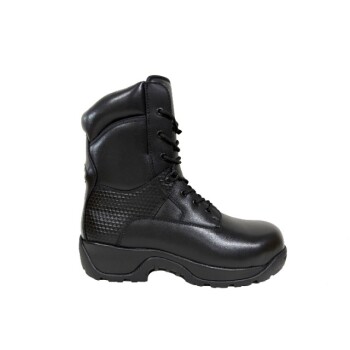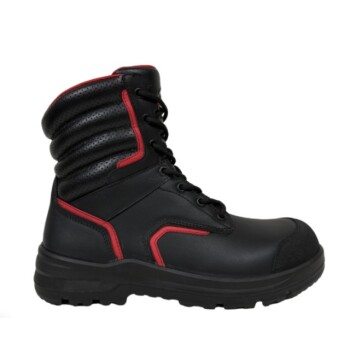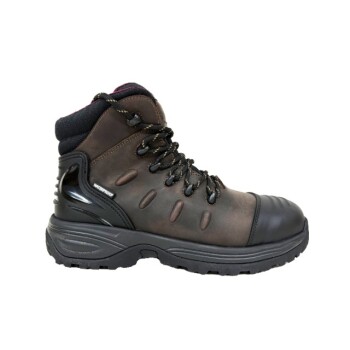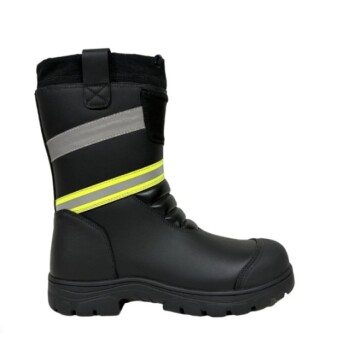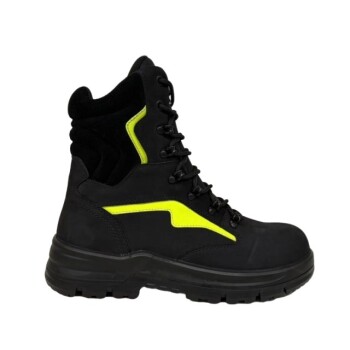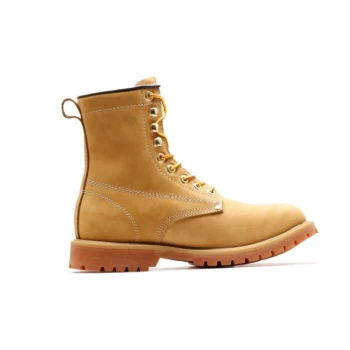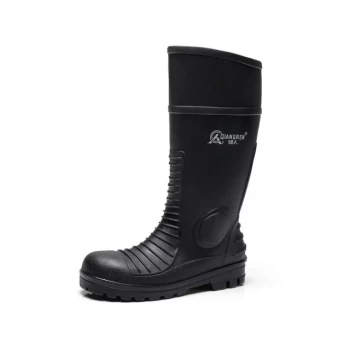At its core, the most common type of footwear worn on oil rigs is the Rigger Boot. This is a specific style of slip-on safety boot, designed as a hybrid between a traditional work boot and a waterproof wellington to meet the unique demands of the offshore environment.
The ideal oil rig boot is not about a specific brand, but about a specific set of features: it must provide robust protection from impact and slipping, be completely waterproof, and allow for quick removal in an emergency.
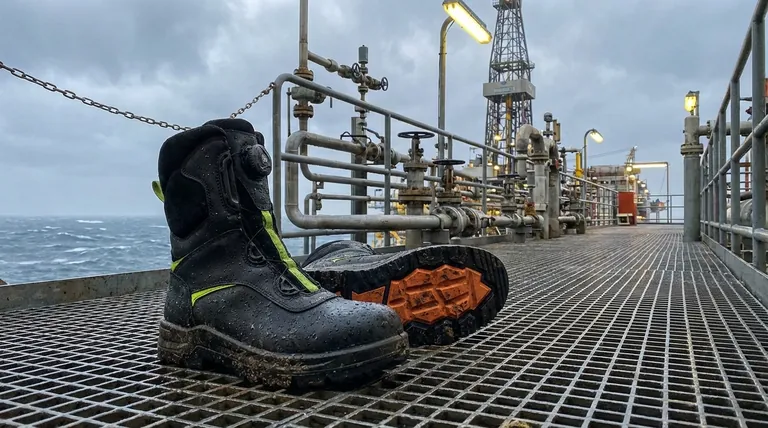
What Defines an Oil Rig Boot?
The harsh conditions of an oil rig dictate the non-negotiable features of the footwear used there. It's a combination of safety compliance and practical design for a wet, hazardous, and demanding workplace.
The Critical Role of Waterproofing
Oil rigs are constantly exposed to water, drilling fluids, and other liquids. A completely waterproof boot is essential to keep a worker's feet dry, preventing discomfort, skin issues, and loss of concentration.
The design often resembles a wellington boot to provide a seamless barrier against moisture from splashes and standing water on the deck.
Essential Safety Features
Like all industrial footwear, oil rig boots are built for protection. They typically feature a steel toe cap to guard against crushing injuries from falling objects or heavy equipment.
Many also include a puncture-resistant midsole to protect the sole of the foot from sharp objects on the rig floor.
The Slip-On Design
Rigger boots are characteristically slip-on, with pull loops on either side to make them easy to put on and take off.
This isn't just for convenience. In an emergency where a boot might become snagged in machinery or grating, the ability to kick it off quickly is a critical safety feature.
A Looser, More Functional Fit
The fit of a rigger boot is intentionally looser than a standard lace-up boot. This contributes to the ease of removal and also allows for wearing thick, warm socks, which is essential in cold offshore climates.
Understanding the Trade-offs
While the rigger boot is a popular choice, its design comes with inherent compromises that are important to understand. Some worksites have even restricted their use.
The Risk of Reduced Ankle Support
The primary criticism of the traditional rigger boot is its lack of ankle support. The loose, slip-on design does not secure the ankle joint as firmly as a lace-up boot.
This can increase the risk of sprains and twists, especially when walking on uneven surfaces or during a slip.
The Importance of a Quality Sole
Given the slick surfaces common on a rig, the slip-resistance of the outsole is paramount. A high-quality, well-designed tread pattern is non-negotiable for preventing falls, which are a leading cause of injury.
Making the Right Choice for Your Goal
Selecting the correct footwear depends on balancing the traditional benefits of the rigger boot with the specific safety requirements of your role and worksite.
- If your primary focus is quick removal and waterproofing: The classic pull-on Rigger Boot is designed specifically for these needs in wet environments.
- If your primary focus is maximum stability and support: A waterproof, high-leg lace-up safety boot offers superior ankle protection and a more secure fit.
- If company policy dictates specific standards: Always defer to your employer's safety guidelines, as they may prohibit certain styles or require specific certifications.
Ultimately, choosing the right footwear is a critical first step in ensuring safety and performance in one of the world's most demanding workplaces.
Summary Table:
| Key Feature | Why It's Essential on an Oil Rig |
|---|---|
| Waterproof Design | Protects feet from constant exposure to water, drilling fluids, and harsh weather. |
| Steel Toe Cap | Guards against crushing injuries from heavy falling objects and equipment. |
| Slip-On Style | Enables quick removal in emergencies where a boot could become snagged. |
| Slip-Resistant Sole | Critical for preventing falls on the slick, wet surfaces of the rig deck. |
Need to source reliable safety boots for your team?
As a large-scale manufacturer, 3515 produces a comprehensive range of certified safety footwear, including rigger boots and high-leg lace-up styles designed for the toughest environments. We provide durable, compliant footwear for distributors, brand owners, and bulk clients.
Contact us today to discuss your specific requirements and benefit from our extensive production capabilities.
Visual Guide
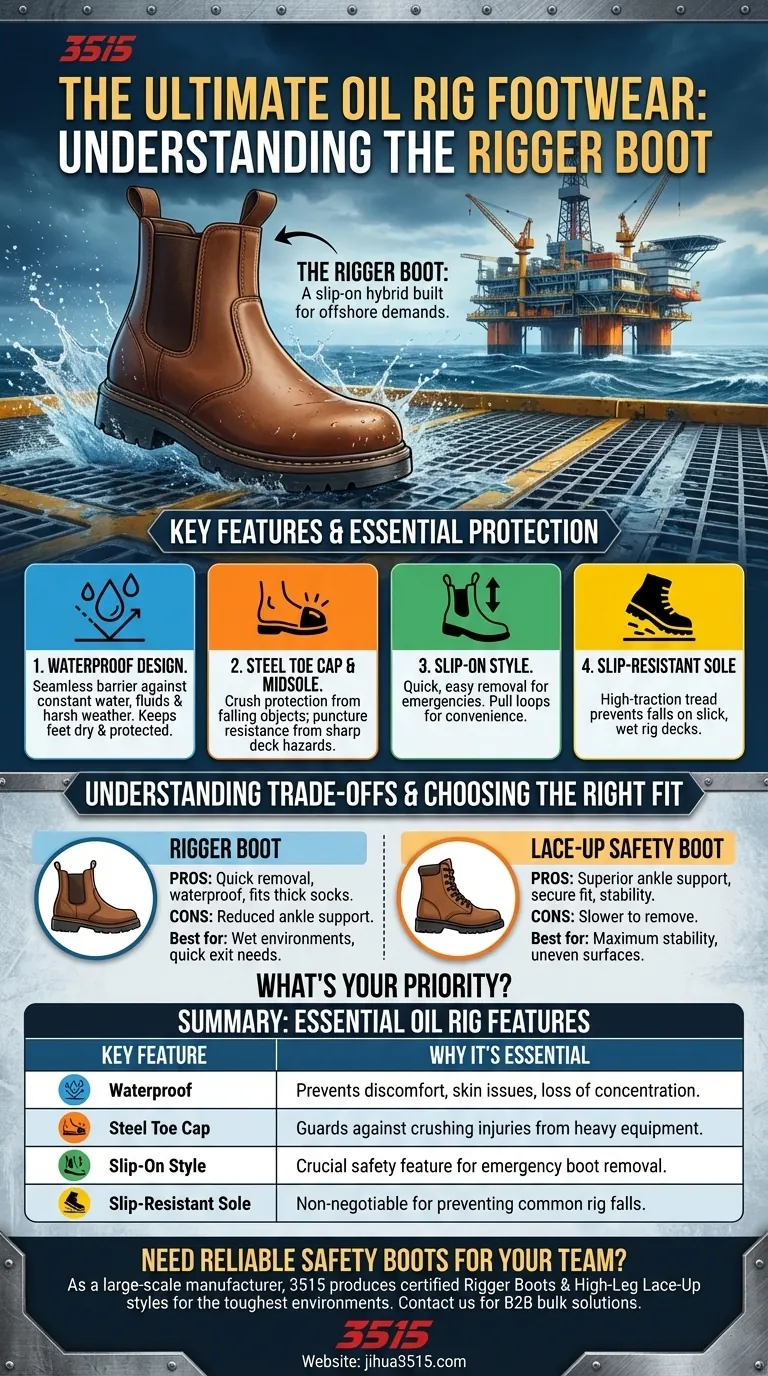
Related Products
- Premium High-Cut Waterproof Safety Boots Manufacturing & Wholesale Solutions
- Custom Wholesale Leather Safety Boots Direct Factory Manufacturing
- Customizable Anti-Smash Safety Boots for Wholesale & Private Label Manufacturing
- Premium Grain Leather Safety Boots for Bulk Supply
- Premium Wholesale Wheat Nubuck Safety Boot with Rapid Lacing System
People Also Ask
- What is the compression resistance requirement in ASTM standards? Essential Guide to the 2,500-lb C Rating
- What is the general recommendation for both steel and composite safety footwear after a significant impact? Replace Immediately for Safety.
- What organization provides safety standards for work boots? Meet ASTM International, the Key to OSHA Compliance
- What are the characteristics of steel toe boots? Maximum Protection & Key Trade-offs
- What type of safety boots should a general construction worker wear? Choose the Right Boot for Maximum Protection



